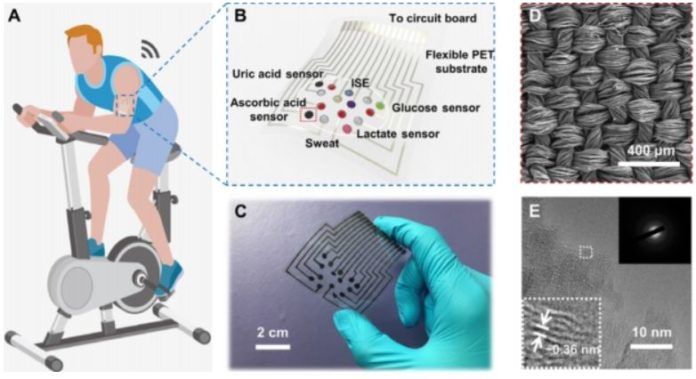Chinese scientists have created and tested an electrochemical sensor on volunteers to analyze sweat from material based on silk fibres. Using the new device, scientists were able to determine in model solutions the concentration of six biomarkers: glucose, lactate, ascorbic and uric acids, potassium and sodium ions. On volunteers, the scientists tested the device’s ability to detect glucose alone. The flexible sensor was able to work almost without losing high sensitivity and good selectivity after several flexion cycles, and even after storing for more than a month.
The development of the disease and the state of the body can often be determined by the content of biomarkers in the blood. However, blood testing is complicated by the need to pierce the skin and the presence of many interfering components, so scientists are actively developing methods of non-invasive analysis of such bodily fluids like saliva or sweat.
Sensory devices for sweat analysis can determine its components by colour changes (colourimetric sensors), using electrochemical processes, as well as fluorescence methods. Most often, electrochemical sensors are created due to their high sensitivity, selectivity, quick response and good compatibility with materials. However, with the simultaneous determination of several metabolites, these characteristics usually decrease.
Wenya He and colleagues from Tsinghua University created and tested on volunteers a device that consists of six electrochemical sensors based on silk fibres with by adding nanoparticles of graphite, supplemented with the nitrogen atom, to simultaneously identify metabolites in sweat.
The woven hierarchical and porous structure of silk-graphite fabric promotes efficient electron transport in it and is easily accessible to the reagent. Moreover, the material is well wetted by water, allowing the substance to quickly reach the electrode. Particles of graphite doped with nitrogen atoms provided good conductivity and the presence of many active centres.
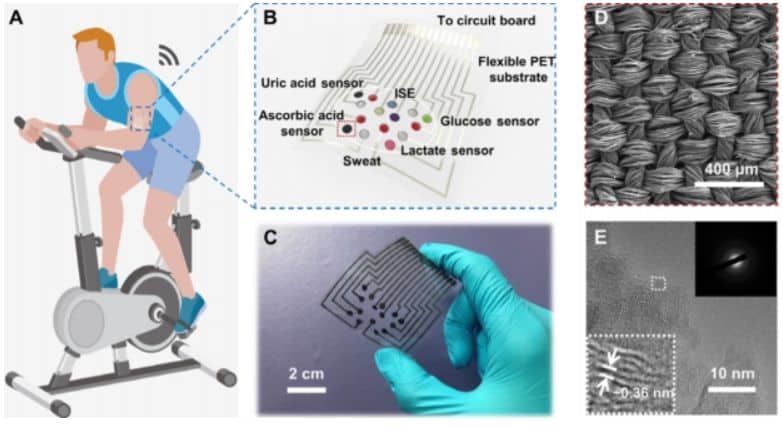
Wenya He / Science Advances, 2019
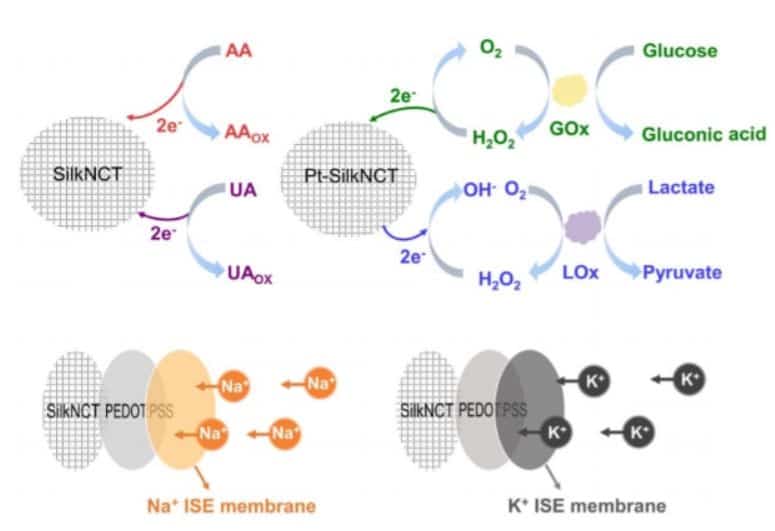
Wenya He / Science Advances, 2019
Sensors reacted to the content of ascorbic and uric acids, their concentration was determined by the current arising in the process of oxidation directly on the electrode. Glucose and lactate amperometric sensors were recorded by the amount of hydrogen peroxide generated in the enzymatic redox process, and the content of potassium and sodium ions was determined by sensors with ion-selective membranes.
Comparing the signal from the interaction of the target molecule with signals from other substances, the authors did not reveal a noticeable overlay of them, which shows the high selectivity of the sensors. And after several cycles of bending and bending, and even after four weeks, the sensory properties deteriorated slightly. The authors believe that such stability is provided by the structure of graphite nanoparticles in silk threads.
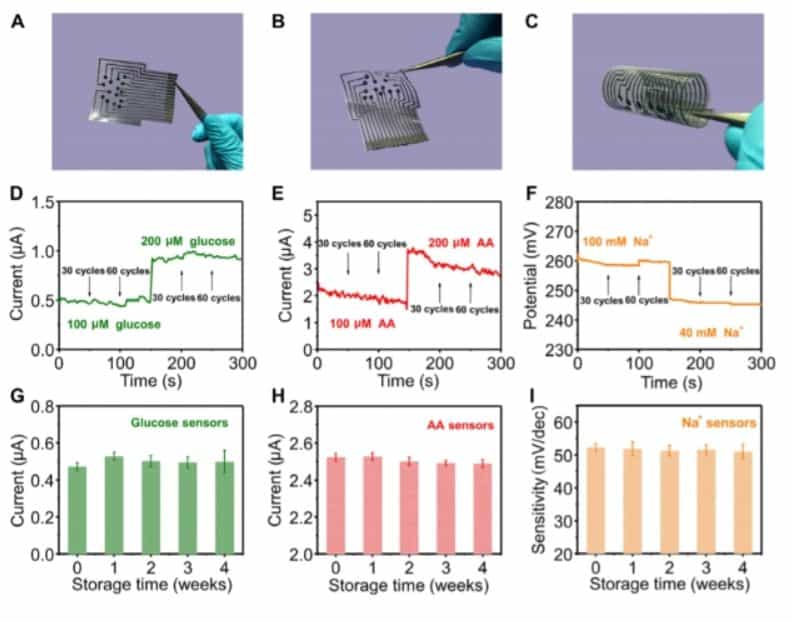
Wenya He / Science Advances, 2019
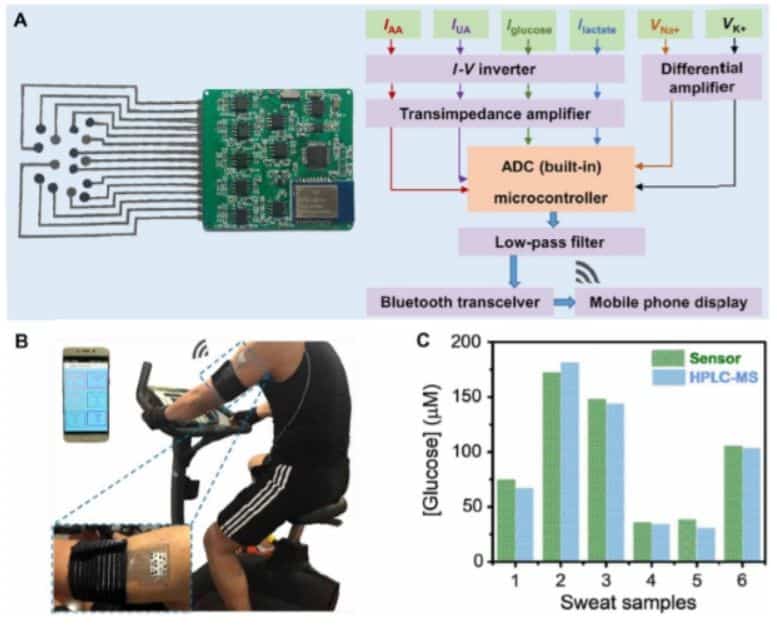
Wenya He / Science Advances, 2019
Scientists combined a polymer film with electrodes with a signal storage and transmission unit and tested the device for determining glucose concentration in volunteers who were engaged in an exercise bike. The analysis results were sent to the phone wirelessly. The glucose concentrations obtained by the sensor were consistent with more accurate chromatographic analysis.
Such devices can be especially useful for patients with diabetes. Korean scientists have created a patch that not only monitors moisture, glucose, acidity and tremors but also contains intradermal microneedles filled with the sugar-reducing drug metformin.
